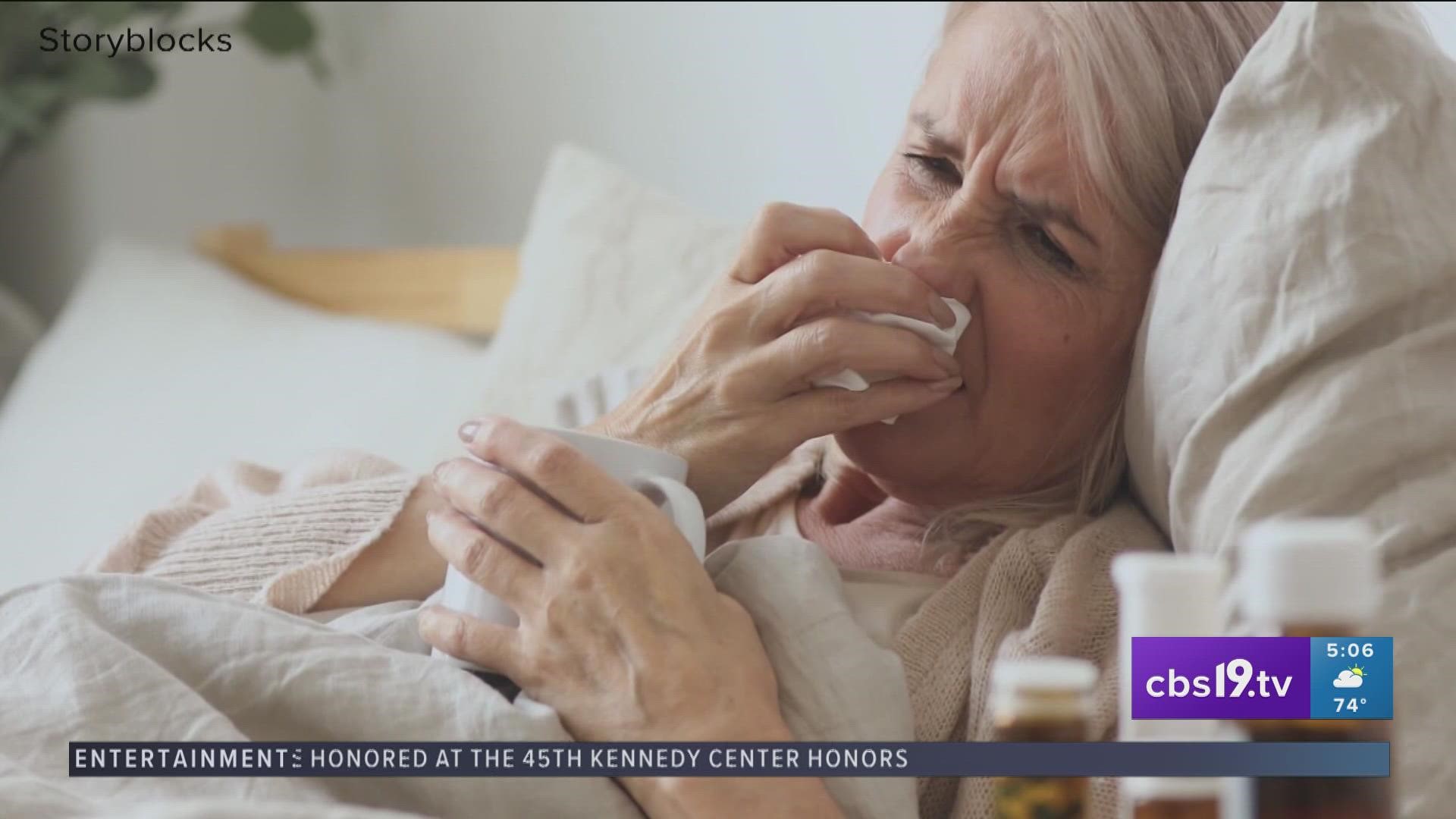TYLER, Texas — Local health officials say the expected post-Thanksgiving 'tripledemic' surge has arrived.
"We're seeing rates of COVID increasing right now," said George Roberts, NET Health CEO. "We're seeing substantial increases in flu cases and RSV is still out there."
Dr. Tom Cummins, UT Health East Texas Regional Chief Medical Officer, said this increase in COVID cases in 'nothing compared' to what we've seen before.
"We're talking 25 [cases] or so across the region, whereas opposed to several months ago, we had between 0 to 2 [cases]," Cummins said.
Roberts said cases are rising, but the numbers reported may not be accurate.
"I caution everyone that cases may be higher because people have at home tests now," Roberts said.
Cummins said hospitalizations in the UT Health system have increased as well.
"The ERs have been a lot busier than they've been in several months," said Cummin.
He said this increase has been steady for the past three weeks.
"We saw some of this before Thanksgiving," Cummins said. "All through this time of year we start seeing a lot of school gatherings, moving away from outdoor football games to indoor sports, so you start to see more people congregating inside, and so that's makes it allows for more rapid spread the community."
Cummins said his rise is anticipated to last throughout the holiday season.
"I think we'll probably be pretty busy for several more weeks until we get maybe out past New Year's," Cummins said.
Roberts said Gregg, Smith, and Wood counties are now in a moderate spread level and to be cautious when feeling under the weather.
"Stay home when you're sick," Cummins said. "Don't expose other people to that."
Cummins also suggests washing your hands often for 20 seconds and to cover coughs and sneezes.
As far as RSV goes, Roberts said it impacts everyone, regardless of age.
"The young, the old the in between, but really the worst cases we find are in the in the younger kids," Roberts said.
While symptoms for COVID, the cold, and flu tend to be similar, Roberts suggests going to a primary care provider once you start to have trouble breathing. From there, the physician will be able to test you. He also suggests getting a flu shot as well.

